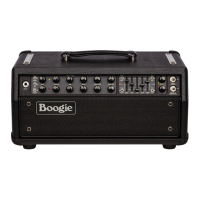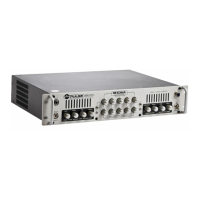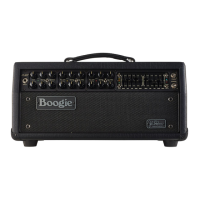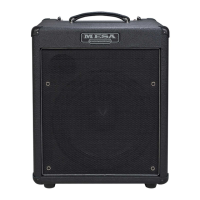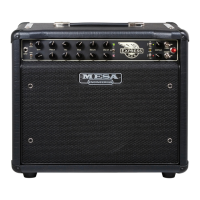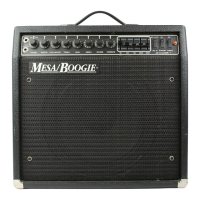PAGE 12
a more retro vibe, the 45-watt selection would be a great place to start.
NOTE: For a bolder, brighter response in the 45-watt setting, try moving the speaker cabinet from the 8 OHM SPEAKER output
over to the 4 Ohm SPEAKER output. The impedance will be a more correct match due to the fact you are using a dierent
tap on the transformer and two fewer power tubes.
25W
Last but not least is the 25 Watt setting on the Multi-Watt switches. This setting reconfigures the inner two 6L6s
to Class A Triode for reduced volume and easier pushing of the power section. With the least power and the
sweetest transition to clip, this is the setting for “low wattage” vintage style performance, at least as far as an
amp with such big iron can take it anyway.
Although it is a “low power” setting, keep in mind the output and power transformers – and therefore internal
voltages – are those capable of supporting a 90-watt amp and therefore have more push, authority, and sheer
mass, which, though knocked down accordingly, still punch above their class. In other words, even the 25-watt
setting can still be loud!
We point this out here to outline the fact that while you will get some of the characteristics of a “little, low power
amp,” there will be dierences due to the bigger transformers and heftier power supply. The 25-watt setting
will introduce an earlier clip threshold allowing more power section breakup (overdrive) earlier, and the sound
will be even less punchy and have an even sweeter top end, but the mechanics of physical mass won’t allow
the same response a dedicated 25-watt amplifier with its relatively small transformers would have.
Now that you understand the physics, let’s get to the sound! 25 Watt shines in the CLEAN and FAT Modes of
Channel 1 (and 2 in FAT) when it’s time to use these traditional gain circuits for pushed rhythm sounds. Crank-
ing up the GAIN control to near its maximum and then also cranking the MASTER up, and perhaps even the
TREBLE and MID, while reducing the PRESENCE, can unveil some great “vintage” style sounds.
25 Watt can also add a harmonic edge to CRUNCH in the first two Channels as well, although there you will
need to ride the GAIN to achieve the perfect blend of preamp and power section overdrive. If you saturate the
preamp with a very high setting of the GAIN control, you won’t as easily be able to hear the characteristics the
power amp being pushed can add, so just keep this in mind when applying the 25 Watt mode to CRUNCH.
The IIB Mode in Channel 3 is another place to look for interesting blends of preamp and power section over-
drive combined. There are some nice nuances the 25 Watt setting can add if you keep the GAIN below 1:00.
Much beyond 1:00, the preamp gain will likely overshadow what the power section might otherwise add when
pushed, but ultimately, it’s what works for your music and style so feel free to experiment.
This 90-watt full-power position would be the place to look for the most headroom and dynamic attack when
searching for clean sounds. It is also where to go for the most width and authority, the tightest tracking low
end in gained-up chording, and a voice-like character for single-note soloing. It is hard to argue with the three-
dimensional width of the Simul-Class (90w) position as it can deliver a sonic footprint that has girth and is
superbly balanced. There may be an added harmonic layering as the amp is switched down to the 45 and 25-
watt positions, but the benefits there for these styles are often not worth the compromise in terms of tracking
on the low end and dynamic presence and integrity.
To summarize, the 25 Watt setting, at least in terms of adding power section character and overdrive, is best
utilized for sounds and musical styles that have or need less front-end/preamp gain. In high gain Modes and/
or with high GAIN settings, the two higher power options will oer more accuracy, control of the low end, and
authority, with 90 Watts being the best suited for these applications.
NOTE: It is normal to hear a pop when the amplifier switches to the 25 Watt setting from either of the two higher power
selections on the Multi-Watt switch (or switch Channels where the power is switched between either of the two higher power
settings to 25W). This pop is due to the voltage changing on the power tubes. We have taken great steps internally to limit
this noise, but there is some residual noise due to the physics of this operation.
